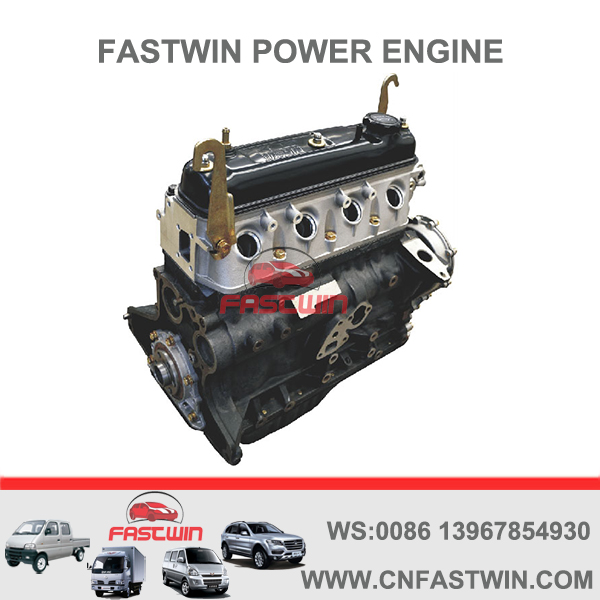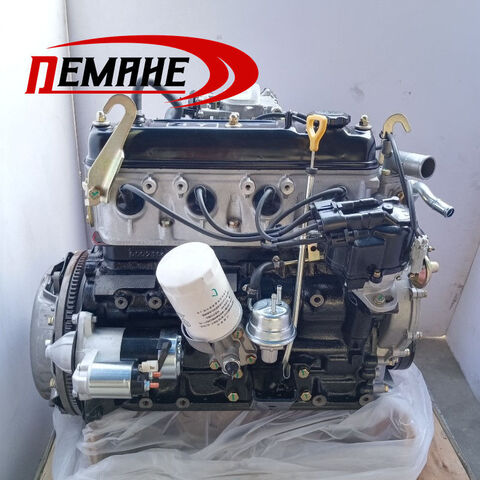Why the Engine Is the most effective Option for Performance and Effectiveness in Your Auto
The engine remains an essential component in auto layout, mainly because of its substantial influence on both efficiency and performance. As innovations in innovation make it possible for smaller engines to provide remarkable power while enhancing fuel economic climate, the assimilation of features such as turbocharging and crossbreed systems becomes significantly vital. These developments not just improve driving experience but also address environmental concerns. The inquiry emerges: exactly how do these aspects coalesce to redefine our understanding of auto efficiency? Discovering this equilibrium reveals deeper insights right into the future of engine design.
Understanding Engine Types
Understanding the various kinds of engines is essential for maximizing efficiency and efficiency in automotive layout. The key engine kinds include internal combustion engines (ICE), electric engines, and hybrid systems, each offering distinct benefits and constraints.
Interior combustion engines, which can be additional classified into fuel and diesel variations, count on the combustion of gas to create power. Gasoline engines typically offer higher RPMs and better velocity, while diesel engines are recognized for their torque and fuel efficiency, making them ideal for durable applications.
Electric engines, on the various other hand, utilize electrical motors powered by batteries or fuel cells. They supply rapid torque shipment, resulting in smooth acceleration and lower emissions. The efficiency of electrical engines is significantly greater than that of ICEs, making them a popular selection for eco-conscious consumers.
Crossbreed systems combine both inner burning and electrical engines, leveraging the toughness of both innovations. They optimize gas intake by utilizing electrical power at reduced speeds and switching to gasoline or diesel for higher rates or much heavier loads.
Selecting the right engine kind is crucial for attaining wanted efficiency metrics and environmental sustainability in modern-day automobile engineering.
The Impact of Engine Size
Engine size frequently plays a critical duty in establishing a car's efficiency and efficiency. Usually determined in liters or cubic centimeters, engine dimension directly affects the power outcome and torque qualities of a lorry.
However, enhanced engine dimension typically associates with diminished gas effectiveness. Bigger engines eat more fuel, causing greater discharges and functional expenses. Consequently, manufacturers need to stabilize the demand for power with the requirement for fuel economic situation. Smaller engines can supply ample performance for everyday driving while advertising better efficiency, making them a prominent option in mid-size and portable automobiles.
Additionally, improvements in engine design, such as turbocharging and direct fuel injection, enable smaller engines to accomplish power degrees similar to their bigger counterparts. This fad emphasizes the importance of not exclusively concentrating on engine size but also considering total car design and technology (4y engine). Eventually, the impact of engine size on efficiency and effectiveness highlights the need for customers to assess their specific driving needs and preferences when picking an automobile
Advanced Engine Technologies
Innovations in engine modern technologies have actually considerably improved the landscape of automotive efficiency and effectiveness, structure upon the fundamental concepts developed by engine size. Notably, innovations such as turbocharging and straight fuel injection have click for more made it possible for smaller engines to deliver power degrees previously related to bigger counterparts. Turbochargers compress air entering the engine, enabling increased power result without an equivalent rise in engine size, while straight injection enhances gas shipment, boosting burning efficiency.
In addition, variable valve timing systems have become a crucial innovation, enabling engines to adjust valve procedure based upon driving problems. This versatility improves both efficiency during acceleration and fuel efficiency during travelling. Crossbreed and electric engine technologies better highlight the change in automotive layout, integrating typical interior combustion engines with electrical motors to make best use of performance while decreasing emissions.
In addition, advancements in products science have resulted in lighter, more durable engine elements, better boosting performance and durability. The combination of sophisticated electronic devices and engine control systems additionally enables real-time modifications, guaranteeing ideal performance across different problems. Collectively, these innovative engine modern technologies not just improve car performance however likewise add to an extra lasting auto future, showing the continuous evolution of engine design.
Balancing Power and Performance
Striking a balance between power and performance is crucial in modern auto style as makers look for to fulfill increasingly stringent emissions laws while satisfying customer demand for performance (4y engine). The Get More Info difficulty depends on enhancing engine features to deliver robust power result without giving up fuel economy
To attain this balance, engineers utilize numerous strategies, such as turbocharging, which boosts engine power forcibly in more air, permitting a smaller sized engine displacement that enhances gas efficiency. Variable valve timing technologies also play a substantial function, allowing engines to readjust their efficiency attributes based upon driving conditions, thereby enhancing both power and efficiency.
Moreover, improvements in materials and manufacturing techniques have actually led to lighter engine parts, which lower general car weight and improve gas performance without endangering power. Hybrid modern technologies have actually likewise emerged as a practical service, incorporating standard interior combustion engines with electric powertrains to supply an increase in efficiency while preserving reduced emissions.

Future Patterns in Engine Style

Furthermore, the development of innovative materials, such as lightweight composites and high-strength alloys, is readied to reinvent engine elements. These products not only minimize weight yet likewise boost thermal effectiveness, consequently maximizing efficiency. Additionally, producers are exploring variable compression proportions, permitting engines to adjust to different driving problems, boosting both power outcome and fuel economy.
Further, the rise of fabricated intelligence and Read More Here artificial intelligence in engine layout is allowing anticipating maintenance and real-time efficiency optimization. This technology can result in engines that self-adjust for optimal effectiveness based on driving patterns.

Conclusion
In final thought, the engine serves as an essential part in attaining ideal efficiency and performance in modern-day automobiles. The interplay between engine size and design continues to evolve, driving developments that stabilize thrilling efficiency with ecological sustainability.
In addition, advancements in engine style, such as turbocharging and direct fuel injection, enable smaller sized engines to attain power degrees similar to their bigger equivalents.Developments in engine innovations have actually substantially improved the landscape of automobile efficiency and effectiveness, structure upon the foundational principles developed by engine size. Turbochargers press air entering the engine, enabling for raised power output without a matching increase in engine size, while direct shot maximizes gas delivery, improving combustion efficiency.
Crossbreed and electric engine technologies additionally highlight the change in automotive design, combining conventional interior combustion engines with electrical motors to maximize effectiveness while decreasing discharges.
Jointly, these advanced engine modern technologies not just enhance car performance yet additionally contribute to a more lasting automotive future, showing the recurring evolution of engine layout. (4y engine)
Comments on “Everything You Need to Know About the 4Y Engine and Its Performance”